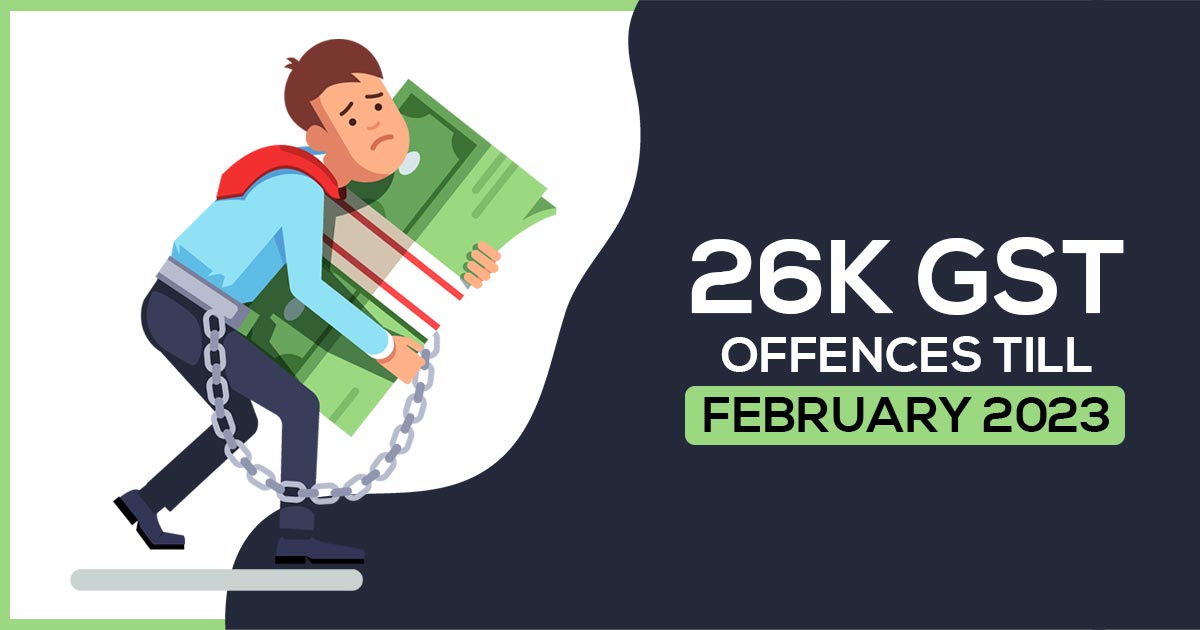
The main reasons for the rise in GST-related offences in the nation today are tax evasion, fake invoices for goods that haven’t been delivered, cyber frauds using Goods and Services Tax (GST) identification numbers, creation of shell companies, fabrication of business transactions, failure to deposit required taxes with authorities, and illegitimately claiming input tax credit (ITC).
The claim is supported by data submitted to the Lok Sabha by the Finance Ministry, which shows that the number of such offences increased from 12,574 in 2021–2022 to 13,492 in 2022–2023. (till February).
After a halt in the growth of these offences from FY21 to FY22, which was 0.2 per cent, there has been an increase of around 7.3 per cent. According to information supplied by the ministry to the Parliament on Monday, there were 57,111 total recorded GST-related offences during the period of five years, from February 2017 to February 2023. Cases were at their lowest point in FY18 at 424; they grew to 7,368 in FY19; 10,657 in FY20; 12,574 in FY21; and then, last fiscal year, they began to decline to 12,574. The figure reached an all-time high of 13,492 between 2022 and February 23.
In terms of percentage, the increase in cases from FY19 to FY21, FY22, and FY23 was 44.6 per cent, 18.2 per cent, 0.2 per cent, and 7.3 per cent, respectively.
Maharashtra led the list of all states with a total of 60,000 crores in theft discovered, followed by Karnataka with 40,507 crores, Gujarat with 26,156 crores, Delhi with 24,217 crores, Haryana with 22,712 crores, and West Bengal with 17,604 crores. According to the data, 1,316 criminals have been detained over the course of these five years, with the majority of those detained being from Maharashtra.
Read Also: Fraudsters’ Mind vs Govt Intelligence for Fake GST Invoices
The entire amount of money stolen and reported in these five years, according to the Finance Ministry, is close to Rs 3.11 lakh crore, with a recovery of about Rs 1.03 lakh crore.
The government has put in place a number of measures to combat fraud and embezzlement, including using powerful data analytics and artificial intelligence to identify and track risky taxpayers and detect tax evasion, as well as running a nationwide special drive against dishonest entities for fraudulently obtaining and passing on input tax credit (ITC) on the basis of fake/bogus invoices.
In addition, only invoices and debit notes provided by the supplier in their statement of outward supplies are eligible for ITC. Additionally, sharing data with partner law enforcement agencies for more targeted interventions, mandating Aadhaar-based authentication for new GST registrations, and centrally suspending registrations of registered persons who fail to file returns on time are other regulations that have been implemented.
The Central Board of Indirect Taxes and Customs (CBIC) field formations have filed charges of indirect tax evasion (GST and service tax) against a number of insurance businesses, the revenue department informed the Lok Sabha on tax evasion by insurance companies. 106 incidents have been reported nationwide in the previous five years involving a total misappropriation of Rs 7,581.80, of which Rs 1,347.17 have been recovered.
After the implementation of the GST in 2017, cases of tax evasion and other associated crimes have increased significantly. Throughout time, numerous modus operandi has emerged to escape the indirect tax employing cunning techniques.